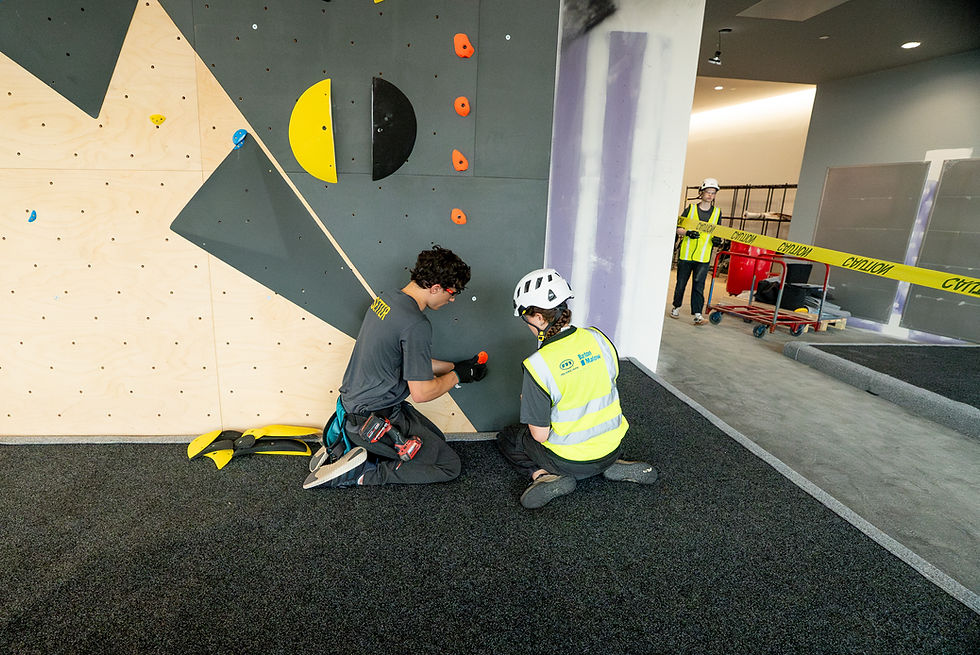Strategic Approaches to Climbing Wall Development
- Sam Gotthelf
- Sep 24
- 3 min read
When it comes to designing or enhancing climbing facilities, the process requires more than just assembling walls and holds. It demands a strategic approach that balances safety, user experience, and long-term sustainability. Over the years, I’ve seen how thoughtful planning can transform a climbing space into a vibrant hub for climbers of all levels. Whether you’re involved in a university project, an organizational initiative, or an architectural design, understanding the nuances of climbing wall upgrade planning is essential.
Understanding the Foundations of Climbing Wall Upgrade Planning
Before diving into the technical details, it’s important to establish a clear vision for the climbing wall. This vision should align with the goals of the institution or organization, the needs of the users, and the available resources. Here are some key considerations to start with:
User Demographics: Who will be using the wall? Beginners, advanced climbers, or a mix? This affects the design complexity and safety features.
Space Constraints: Assess the available area carefully. Vertical height, floor space, and ceiling clearance all influence the wall’s design.
Budget and Funding: Establish a realistic budget that covers construction, maintenance, and future upgrades.
Safety Standards: Compliance with industry safety standards is non-negotiable. This includes materials, fall zones, and anchoring systems.
By addressing these factors early, you set a solid foundation for a successful project. For example, a university climbing wall designed primarily for beginners will focus on easier routes and more instructional space, while a facility targeting experienced climbers might prioritize overhangs and dynamic features.

Key Elements in Climbing Wall Upgrade Planning
Upgrading a climbing wall is an opportunity to enhance functionality and user engagement. Here are some strategic elements to consider:
Route Setting and Variety
One of the most dynamic aspects of a climbing wall is its routes. Regularly updating routes keeps climbers challenged and engaged. When planning upgrades, consider:
Route Difficulty Spectrum: Ensure a balanced range of difficulties to cater to all skill levels.
Innovative Features: Incorporate volumes, cracks, and overhangs to diversify climbing experiences.
Safety and Accessibility
Safety upgrades might include improved padding, better fall zones, and updated anchoring systems. Accessibility is equally important:
Inclusive Design: Incorporate features that accommodate climbers with disabilities.
Clear Signage: Use clear, visible signs for route grades and safety instructions.
Lighting: Ensure the wall is well-lit to prevent accidents.
Technology Integration
Modern climbing walls can benefit from technology:
Auto-Belay Systems: These provide safe solo climbing options.
Route-Setting Software: Helps route setters design and track routes efficiently.
Interactive Features: LED holds or digital scoring can enhance user engagement.
Practical Steps for Effective Climbing Wall Upgrade Planning
Planning an upgrade can feel overwhelming, but breaking it down into manageable steps helps maintain focus and momentum.
Conduct a Needs Assessment: Gather input from current users, staff, and stakeholders to identify pain points and desired improvements.
Evaluate Existing Infrastructure: Inspect the current wall for wear, safety issues, and design limitations.
Set Clear Objectives: Define what success looks like—whether it’s increased user capacity, enhanced safety, or improved aesthetics.
Develop a Detailed Plan: Include timelines, budgets, and resource allocation.
Engage Experts: Collaborate with experienced climbing wall designers, engineers, and safety consultants.
Implement in Phases: If possible, phase the upgrade to minimize downtime and allow for feedback.
Train Staff: Ensure staff are knowledgeable about new features and safety protocols.
Promote the Upgrade: Use marketing and community outreach to generate excitement and attract new users.
By following these steps, the upgrade process becomes a structured journey rather than a daunting task.
Maximizing Community Engagement and Growth
A climbing wall is more than just a physical structure; it’s a community hub. Strategic planning should include ways to foster engagement and growth:
Programming: Offer classes, competitions, and social events to attract diverse groups.
Partnerships: Collaborate with local schools, clubs, and organizations.
Feedback Loops: Regularly solicit user feedback to guide future improvements.
Marketing: Use social media, newsletters, and events to build a loyal user base.
By creating a welcoming and dynamic environment, the facility can thrive and expand its reach.
Moving Forward with Confidence
Embarking on a climbing wall upgrade is an exciting opportunity to innovate and inspire. With careful planning, attention to detail, and a commitment to quality, the end result can be a facility that serves its community for years to come. Remember, the key is to balance ambition with practicality, ensuring every decision supports safety, usability, and sustainability.
If you’re ready to take the next step, consider reaching out to experts who specialize in climbing wall design and development. Their insights can help you avoid common pitfalls and unlock the full potential of your project.
Together, we can build climbing spaces that challenge, delight, and empower every climber who steps onto the wall.



Comments